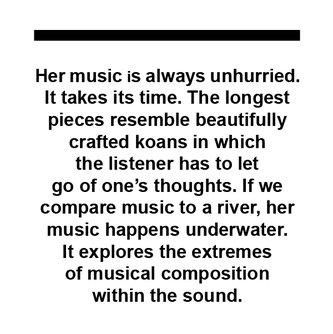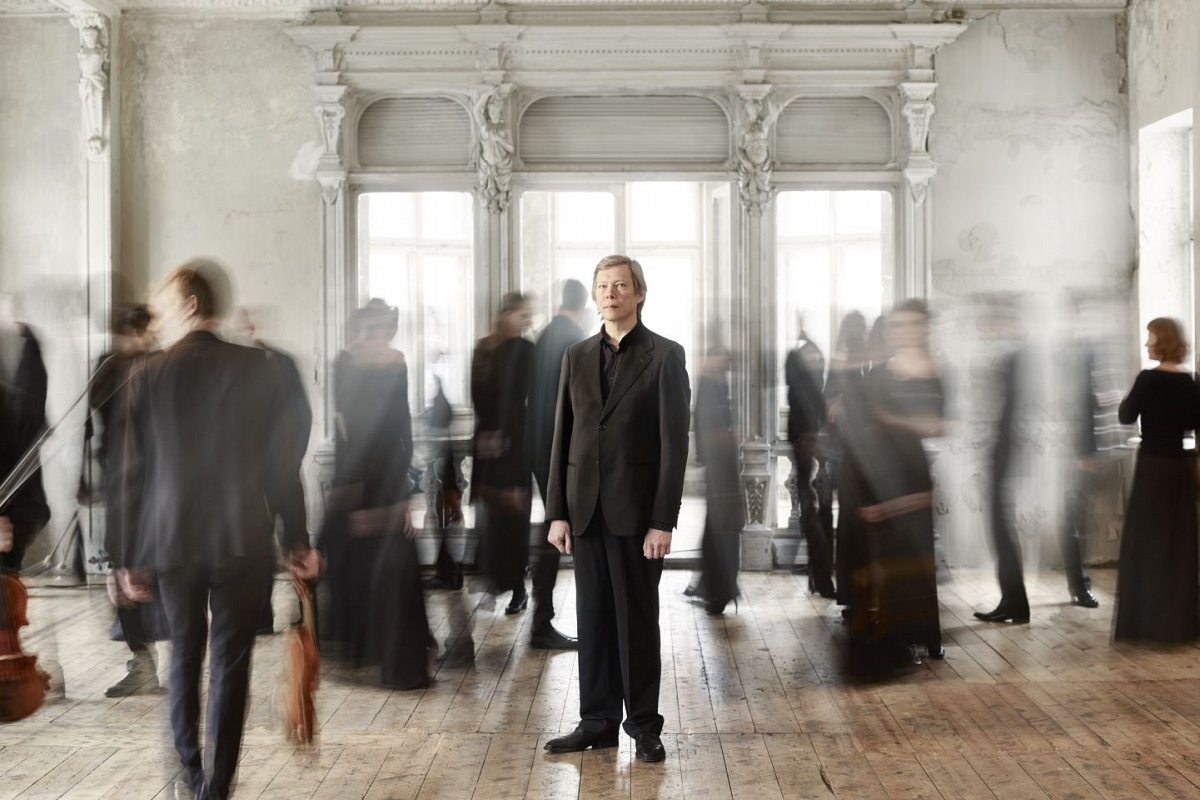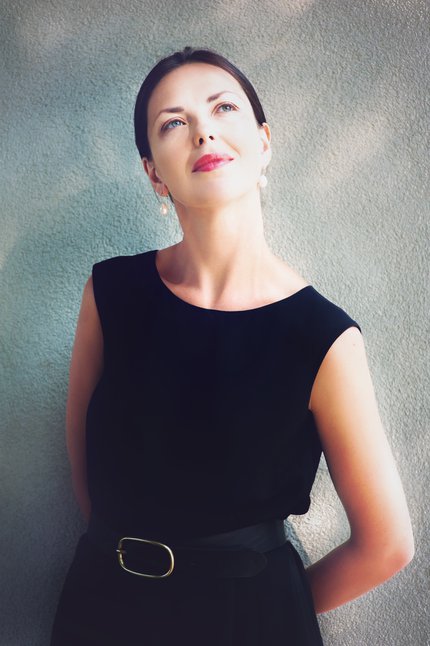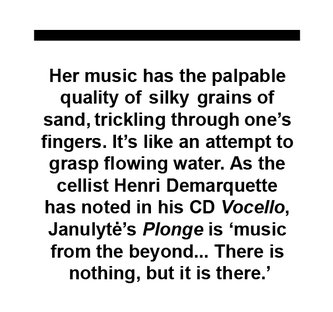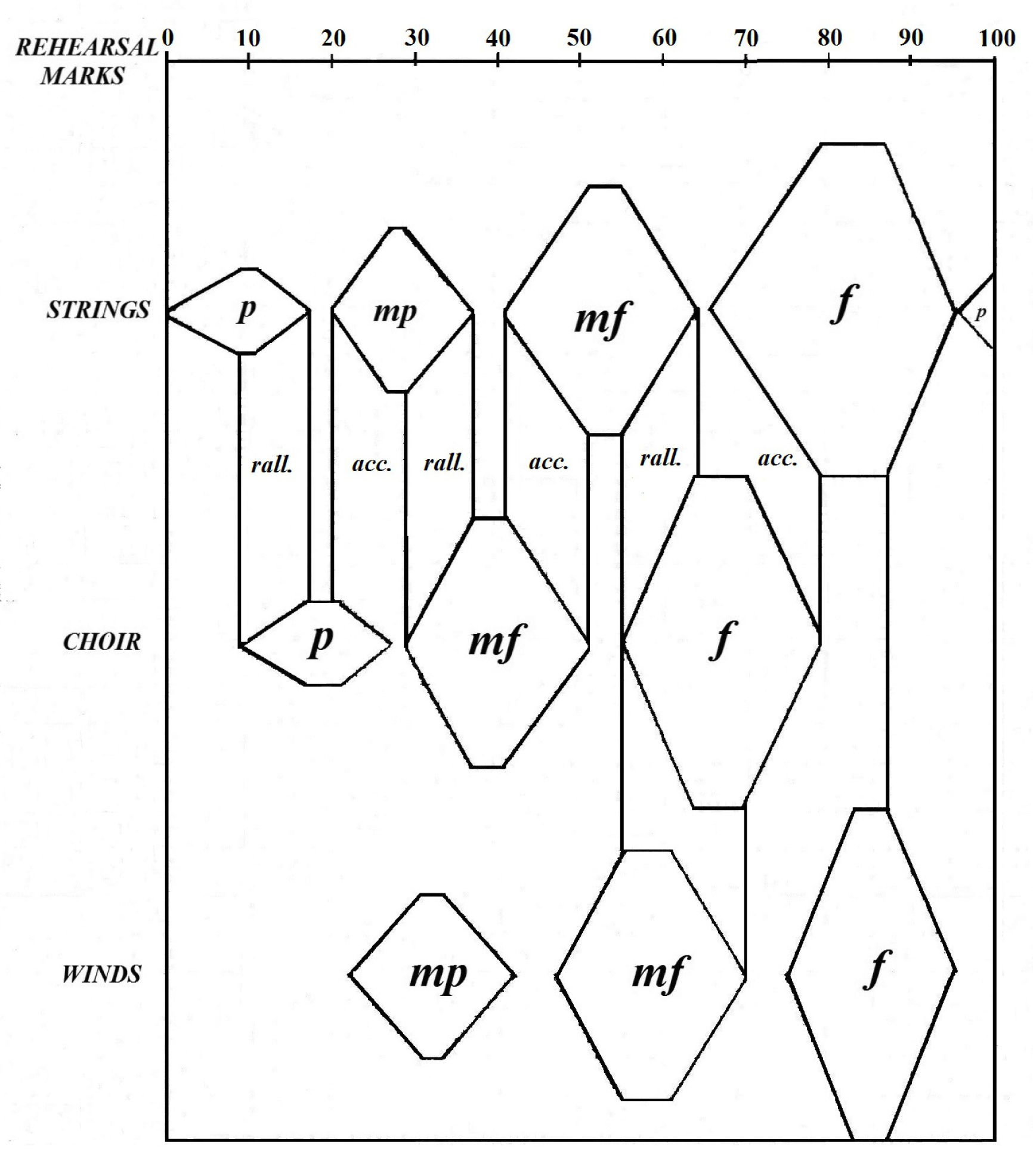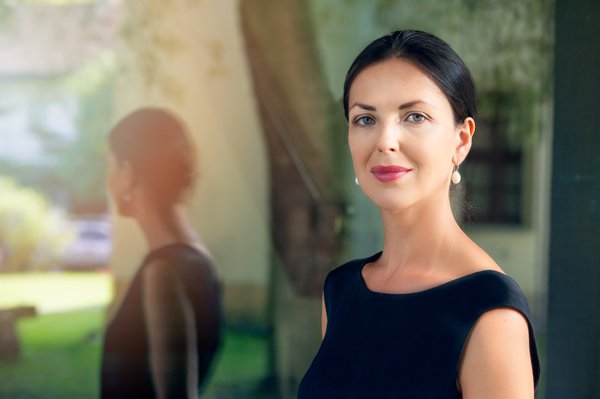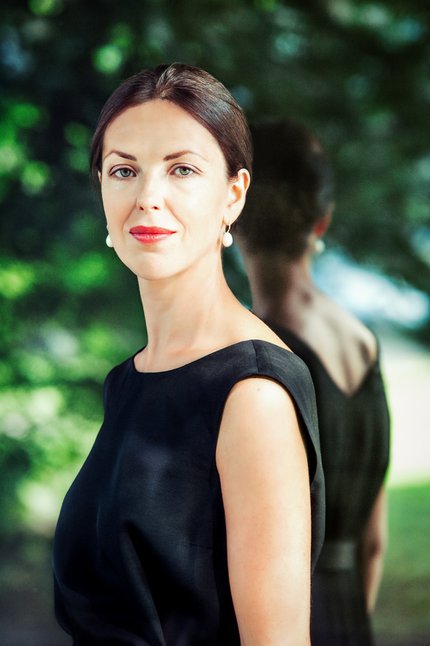Dāvis EŅĢELIS | The Long Koans by Justė Janulytė
I have always considered Justė Janulytė my favourite Lithuanian composer. Actually, she is the first of the Lithuanian greats upon whom I decided to confer this tag. At the Jāzeps Vītols Latvian Academy of Music, we were introduced to how classical music developed and changed through the national awakening in the 19th century, the Soviet era and the reclaimed independence of the three Baltic States. Whenever Lithuania was the central topic, I heard the names of Osvaldas Balakauskas and Bronius Kutavičius, I had also heard the music of Justė Janulytė and that was the end of my list of Lithuanian contemporary music references.
The reason for that is quite simple – of all the Lithuanian composers Janulytė has been probably the most represented on the Latvian concert scene, largely thanks to conductor Normunds Šnē and the chamber orchestra Sinfonietta Rīga. That makes me think that Latvians have heard some of Janulytė’s symphonic works but not much of her chamber music, let alone her few choir pieces. At least that’s the sight that appears in the Latvian Radio archive, searching for Janulytė’s recordings.
This article is a collection of thoughts provoked by the music of, in my opinion, one of the most masterful and interesting Baltic composers, the Lithuanian Justė Janulytė (b. 1982). As unique as she is in my perception, almost no one has created artworks in this world without being influenced by cultural narratives and traditions. Therefore, I contextualize her music by referring to my own cultural experiences. May I add that occasional structural frameworks or classification of the composer’s music, as well as the text in its entirety, may be read as an essay with no musicological ambition whatsoever. One of the jobs of a musicologist is to classify. If you like, this may be classified as a letter to Justė Janulytė.Justė Janulytė and Some Famous Baltic Neighbours
To put the music of Justė Janulytė into words is a nearly impossible task.
First, her music has the palpable quality of silky grains of sand, trickling through one’s fingers. It’s like an attempt to grasp flowing water. As the cellist Henri Demarquette has noted in his CD Vocello, Janulytė’s Plonge (2015) is ‘music from the beyond. … There is nothing, but it is there.’
Second, Janulytė, as far as I know, is a popular subject in Lithuanian musicology. Musicologists deal with music by using words, and that has always been a problematic issue per se. How should one describe what he hears?
Words, however, tend to settle in our minds. I presume that those who talk habitually about Janulytė’s music share the same problems as those who try to say something about the music of Pēteris Vasks, the Latvian composer best known throughout the world, while at the same time not stumbling over the banal descriptions (some of them self-proclaimed verities) by musicologists and music journalists.Clouds
From the point of conception Observation of Clouds (2012) is like the negative of géologie sonore by Bernard Parmegiani. His thought behind the electronic composition was the view on earth from an aeroplane. The cloud observation we hear in Janulytė’s work originates from the poem by the legendary Latvian poet Knuts Skujenieks. What is left in the score, however, are only the vowels of the text, an impulse of energy with no palpable meanings. That isn’t anything unusual in the era of contemporary composition, but, when journalists start drawing parallels between Janulytė and Pēteris Vasks (which might be reasonable in a way), her approach to text marks a significant difference between generations. For the text in Vasks’s music (and that of his Latvian contemporaries) is mostly perceptible in its totality, and the contemplation of the text may be crucial for the perception of the music. What speaks to Janulytė’s mastery is that she has perhaps captured the quintessence of Skujenieks’s poem in her Observations while not using a word from it.
The Psalms
A performance of the Psalms, written for different instruments over the years, usually lasts around 11 minutes, making this piece one of the shortest in Janulytė’s creative output. The Psalms may be viewed as a piece that captures the essence of the composer’s style. They embody a dual quality of dense, intensive musical substance and transparency.
The version for 8 bass flutes (2014) provides the piece with the most profoundly resonant effect, here the space of the music seems to expand vertically, down into the ravine of bass flute frequencies. The Psalms for cello (2008) resemble the meditative flow of Tibetan bowls. Listening to the Psalms for electric guitar (2018) sparks a thought that in this piece Janulytė has made some unconscious connections with Brian Eno. The slow-paced development of the elongated notes brings back some vibes of Eno, particularly his hour-long Reflection.Listening to Janulytė’s Psalms and then to Eno’s Reflection is like being immersed in different seas but feeling the same waves washing around your ankles. In the end, it’s all that matters – that music affects you. That’s what could be said by a person perfectly satisfied with the music around her. For those who struggle with the everlasting problem of categorizing music within genres and styles, it’s a bit more complicated. For me, a person with a musical education, it’s pretty obvious that the calm pacing of Janulytė’s Psalms has more layers and polyphonic subtleness than the long drones of Eno’s Reflection – with or without Janulytė’s commentary about her piece.
These ‘self-evident’ differences between Eno’s ambient style and Janulytė’s polyphony might be missed by someone who doesn’t care about composition and musical structure. For those who are still shouting “well, what’s the difference?” I may give my subjective answer – music is a continuum and, speaking of education, Janulytė has (or should have) a place in music school standards as much as Eno.
Ritual and the Criteria of Individuality
I would think it should be self-evident that Janulytė is able to conjure up a flawless continuity of sound in her compositions. It’s as if she let the sound flow of its own accord. Obviously, that’s an illusion for there is a compositional structure behind the seamless flux of sounds.
How does she manage it? Are musicologists capable of answering this question with the help of analysis? The more I deal with musicology, the more sceptical I become of the last question. There is, however, a more philosophical way of re-stating it.
Amongst the most intriguing and memorable conversations I had about music during my bachelor’s degree studies were the ones with the Latvian avant-garde master Jānis Petraškevics (Jānis and Janulytė represent the same generation of Baltic composers). He has given lectures about avant-garde music, which I rate very highly. He once provoked a discussion when he was a composition student with his professor. They talked about what exactly makes one’s musical expression individual if we can find the same tools of language in the music of others.If I’m not mistaken, we were discussing Zimmermann and Stravinsky in the light of individual styles. Now, when listening to the subtle polyphony of Janulytė’s music, mostly the works like Sandglasses (2010), Observation of Clouds or The Colour of Water (2017), I immediately think of Ligeti and his stand-still, processual works of micro-polyphonic magnitude – Lontano and Lux Aeterna are the first that come to mind (I smile when I dig out an interview with Janulytė in 2012 and there among her inspirations she names Ligeti and Scelsi).
The interesting question here is – what are the qualities that define the polyphonic characters of Ligeti and Janulytė? I may say that Ligeti has more melodic substance to the themes of his canons while Janulytė possesses more extreme spatiality. That may or may not say something about the music. I definitely do not claim to have the answer here. Although I believe both Ligeti and Janulytė are the sort of individuals who could be candidates for simple and ingenious answers, but most likely the task to pin down the individual style of each of them is a lot more complicated.
The Psalms may perhaps be not the best of examples, to which one should draw a comparison with Ligeti, but one of Janulytė’s own parables about this piece could give us a good attempt of putting her music in words.The Psalms consist of one musical line, played in multiple layers. Janulytė draws the parable of psalm or mantra, which is sung or declaimed by a group of people, each of them bestowing different timbral and intonational nuances to the oral formula. In some traditions, ritual prayers are not considered to be music, in the sense that music is something one listens to and receives pleasure from. The musical component of the ritual is thus only a functional tool. In this sense, Janulytė has probably found a midline between the two poles. What she writes on a score is music and at the same time is not. A paradox, which may explain why her music is so alive and relevant in our time.
Approaching Musical Composition as Swimming
Recently I went to a concert by the Latvian Radio Choir Group, led by the conductor Kaspars Putniņš. They performed compositions written by the versatile guitar player Matīss Čudars. He is not the first Latvian musician who is not a professional composer but writes regularly for professional ensembles with a classical music background. To some extent, I may call it a trend, especially in the field of Latvian choir music.
As a matter of fact, these sorts of experiments do not always end up with satisfactory results. There is, however, a word of defence for those who first step into the waters of composition, and for me it is the high level of playful unpredictability, for there are cases when it is not an academic degree but the gifted, not properly (what does that even mean?) educated musical minds who produce remarkable works of unity-in-variety[1], thoughtful and original musical compositions.
Čudars may be one of the most promising of them. His last performance with the Radio Choir Group led me to think that his individual conception of musical composition that includes lots of sustained, never-ending guitar playing, an overall tonal approach and bits of controlled improvisation, resembles a swim downstream a river, where one alternately flows through water on one’s stomach watching the banks go by, then turning on one’s back and observing the sky and the occasional tree top.
Until the composers of the 20th century began to immerse themselves in the nature of sound itself, the classical approach of composition till that point may be viewed as drifting through a river on a raft. I can imagine Haydn, one of the most adventure-seeking spirits among his colleagues (at least in music), with an oar of tonal functionality in his hands. And then there is Janulytė who, like her predecessors, has ditched the raft altogether and explores the sound from within by diving underwater.
Expanding the Monochrome
Janulytė herself has said that her music is monochrome – in the sense of the word that it’s mainly written for one kind of instrument. It is therefore even more intriguing to see which instruments she chooses to put in an ensemble.
Accordion and cello blend together remarkably in her Aria (2008). It’s one of Janulytė’s most sculpturesque works. Listening to Observation of Clouds (premiered in Latvia), I dug up the reviews written by Latvian critics after its premiere, where everyone hailed the subtle counterpoint of choir and chamber orchestra. I have to agree with one of the critics that at times it sounds admirably close to the accordion. It’s similarly remarkable how Janulytė treats texture in the piece Plonge for choir and cello solo. The main material builds up from short range slow glissandi which almost reach a certain pitch to descend down another slope.
Consonance
Reading the comments written under the tracks of Janulytė’s SoundCloud account, words like ‘beautiful’, ‘pleasant to ear’ and ‘meditative’ appear among others. To not lose the focus between the definitions of beauty, I’ll just say that Janulytė is one of those composers who make consonant structures (mind you, this is a rough terminology I’m using here) sound very contemporary, without reaching for functional tonality.
I asked the Swedish composer Kent Olofsson about the same problem: how he manages to write such consonant pieces as Membra Jesu Nostri or Champs d’étoiles while avoiding hackneyed pools in the tonal marsh. Quite effortlessly, he attributed his achievements to his experience and technique. He added though that he explores the instruments he is writing for and takes account, for example, of the natural tuning and micro-tonal possibilities of the theorbo. Janulytė gave a similar answer in an interview to a Latvian media outlet, saying that it’s important for her to get acquainted with the acoustic abilities of an instrument. Thus, the musical organization derives from the specifics of the instrument and not vice versa.
Taking One’s Time
In the never-ending struggle to capture music in words, the music almost always falls through the grasp of the language. Miles Davis in his Autobiography almost never tries to describe or depict the music. When praising the mastery of someone’s musicianship, he goes only so far as to say that he ‘played his ass off’ or that it was ‘something else’. Music is untameable by words, so it seems. So, what are the words that would suit Janulytė’s music best?
Her music is, firstly, always unhurried. It takes its time. The longest pieces (and some of her masterpieces – Sandglasses, Observation of Clouds) resemble beautifully crafted koans in which the listener has to let go of one’s thoughts. Secondly, sometimes it is music and sometimes it isn’t. In the sense of a ritual music that’s not music for those who practice the ritual. In a way, Janulytė herself contributes to this thought by looking for inspiration in the cycles of nature and masterfully weaving a musical thread out of it. Thirdly, Justė Janulytė is able in her art to keep the distance of an observer. Fourthly, if we compare music to a river, her music happens underwater. It explores the extremes of musical composition within the sound.
English text edited by Romas Kinka
[1] Frederick C. Beiser brings back this tarnished definition of beauty by the aesthetic rationalists in his truly beautifully written Diotima’s Children.

